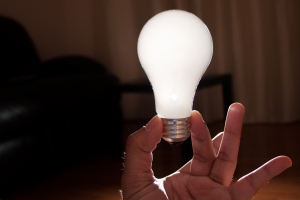The proverb “necessity is the mother of invention” has resonated throughout human history, embodying the idea that challenges and needs often drive creativity and innovation. From ancient tools to cutting-edge technologies, the force of necessity has continually propelled humanity forward. In this article, we explore the origins, significance, and modern implications of this adage, offering a detailed examination of how necessity fosters invention across various fields and eras.
The Origins of the Phrase
The phrase “necessity is the mother of invention” is often attributed to the ancient Greek philosopher Plato. While the exact phrase does not appear in his writings, its essence can be found in his work “The Republic,” where he discusses how basic needs lead to the establishment of societies. Over time, this sentiment evolved into the modern English version of the saying, encapsulating the universal truth that human ingenuity thrives in the face of need.
Historical Examples of Necessity-Driven Inventions
1. The Agricultural Revolution
The transition from nomadic lifestyles to settled agricultural societies was driven by the need for reliable food sources. Tools like ploughs and irrigation systems were developed out of necessity, allowing humans to cultivate land more efficiently and support larger populations.
2. Industrial Revolution Innovations
The Industrial Revolution brought a wave of inventions designed to meet the growing demands of an urbanising world. The steam engine, for instance, emerged as a solution to the energy needs of mining and transportation. Similarly, textile machines like the spinning jenny revolutionised fabric production to meet the clothing demands of expanding populations.
3. Wartime Innovations
Wars have historically been periods of intense innovation, driven by the urgent need for survival and strategic advantage. Radar technology, developed during World War II, was a response to the necessity of detecting enemy aircraft. Similarly, the internet—originally ARPANET—was created during the Cold War as a means of secure communication.
Psychological and Sociological Drivers of Innovation
Human Resilience and Creativity
When faced with challenges, humans exhibit remarkable resilience and creativity. Psychologists argue that constraints and pressures often act as catalysts for problem-solving, pushing individuals and societies to think outside the box.
Collaboration and Shared Necessities
In many cases, necessity-driven innovation is a collective effort. Communities facing shared challenges often pool resources and knowledge to develop solutions, exemplifying the adage on a societal level. Open-source software, for example, reflects collaborative innovation driven by the need for accessible technology.
Necessity in Modern Technological Advances
Green Energy Solutions
The global necessity to combat climate change has spurred significant innovation in renewable energy. Solar panels, wind turbines, and energy-efficient appliances have been developed to reduce carbon footprints and meet sustainability goals.
Medical Breakthroughs
Healthcare challenges, particularly during crises, have led to groundbreaking inventions. The rapid development of COVID-19 vaccines showcased how urgent needs can accelerate innovation, with scientists leveraging mRNA technology to address the pandemic.
Space Exploration
The necessity to overcome Earth’s limitations has driven advancements in space technology. Inventions like reusable rockets and water filtration systems for space habitats address the unique challenges of extraterrestrial living while finding applications on Earth.
The Role of Necessity in Business and Entrepreneurship
Startups Solving Real-World Problems
Entrepreneurs often succeed by identifying unmet needs and developing products or services to address them. Companies like Tesla and Uber are prime examples of businesses born from the necessity to rethink transportation and energy solutions.
Customer-Centric Innovation
Businesses that focus on understanding and fulfilling customer needs tend to thrive. The principles of design thinking and user-centric design underscore the importance of necessity in creating impactful solutions.
Challenges and Ethical Considerations
Balancing Innovation with Ethics
While necessity drives invention, it also raises ethical questions. For instance, the development of artificial intelligence and surveillance technologies addresses certain needs but also poses privacy and ethical dilemmas.
Addressing Inequities in Access to Innovation
Not all communities have equal access to the benefits of necessity-driven inventions. Bridging this gap requires a focus on inclusive innovation, ensuring that solutions reach underserved populations.
Expanding the Concept: Broader Implications
Education and Skill Development
The necessity to adapt to a changing world has transformed education. Online learning platforms like Coursera and Khan Academy were developed to address the need for accessible education, enabling people from diverse backgrounds to gain skills and knowledge.
Transportation and Urban Planning
Modern urbanisation has necessitated innovations in transportation. Electric scooters, bike-sharing programmes, and high-speed trains address the need for sustainable, efficient, and accessible travel options. Urban planning innovations like smart cities use technology to improve living standards and resource management.
Communication and Connectivity
The demand for faster and more efficient communication has driven technological leaps, from the telegraph to the smartphone. Social media platforms, video conferencing tools, and collaborative software have emerged to meet the needs of a connected global society, particularly during times of crisis like the COVID-19 pandemic.
Necessity in Arts and Culture
The Role of Constraints in Creativity
Artists and creators often produce their best work under constraints. The necessity to express emotions or respond to societal issues has given rise to influential art movements like Dadaism, which emerged from the disillusionment of World War I.
Innovation in Entertainment
The entertainment industry continuously evolves to meet the changing tastes and needs of audiences. Streaming platforms like Netflix and Spotify revolutionised content delivery, responding to the need for convenience and personalised experiences.
Future Trends: Where Necessity Will Lead Us
Renewable Energy Breakthroughs
As the global population grows, the necessity for sustainable energy will drive the development of advanced solutions like nuclear fusion, improved battery storage, and hydrogen fuel cells.
Advanced Healthcare Technologies
The necessity to address aging populations and global health challenges will spur innovations in personalised medicine, wearable health tech, and telemedicine services.
Exploration and Colonisation
The need to explore new frontiers will likely lead to breakthroughs in space travel, including the colonisation of other planets. This necessity-driven exploration could also solve pressing Earth-based challenges by inspiring new materials and technologies.
Socioeconomic Impact of Necessity-Driven Innovation
Job Creation and Economic Growth
Necessity-driven inventions often lead to the creation of new industries and job opportunities. The rise of renewable energy, for example, has generated employment in solar panel manufacturing, wind turbine installation, and green infrastructure development.
Reducing Inequality
Innovations that address basic needs, such as affordable housing and clean water technologies, have the potential to reduce inequalities and improve the quality of life for underserved populations.
Bringing it home
“Necessity is the mother of invention” remains a timeless truth, reflecting humanity’s ability to adapt and innovate in response to challenges. From ancient agricultural tools to modern technological marvels, necessity has consistently spurred progress. By expanding the scope of innovation to include diverse fields such as education, urban planning, and arts, we can better understand the profound impact of necessity on human development. As we face contemporary challenges such as climate change, global health crises, and resource scarcity, this principle will undoubtedly continue to inspire solutions that shape the future. The fusion of creativity, collaboration, and need ensures that humanity remains poised to tackle even the most daunting obstacles.







 Surely one day they’re going to invent a way to heal cuts and wounds significantly faster. Some kind of material that you just rub onto a wound (or a super-plaster of sorts), and within minutes the wound is healed and there are no scars.
Surely one day they’re going to invent a way to heal cuts and wounds significantly faster. Some kind of material that you just rub onto a wound (or a super-plaster of sorts), and within minutes the wound is healed and there are no scars. Here’s one that we all can hopefully agree upon. We’re living in the twenty-first century, and yet there is still no cure for the common cold. A cold brings you down: it makes you snivel and sniff and all congested for days.
Here’s one that we all can hopefully agree upon. We’re living in the twenty-first century, and yet there is still no cure for the common cold. A cold brings you down: it makes you snivel and sniff and all congested for days. So you’re chewing your gum. Chewing and chewing. You’re really enjoying the flavor: it’s fresh, pungent, rich and sometimes even a bit spicy. And after a few minutes it’s gone, evaporated. You might as well be chewing on a piece of rubber; it tastes just the same. That’s why we say that someone should invent infinitely flavorsome chewing gum.
So you’re chewing your gum. Chewing and chewing. You’re really enjoying the flavor: it’s fresh, pungent, rich and sometimes even a bit spicy. And after a few minutes it’s gone, evaporated. You might as well be chewing on a piece of rubber; it tastes just the same. That’s why we say that someone should invent infinitely flavorsome chewing gum. One of the most painful things in the world is your mobile phone going dead. Especially when you’re out, with no access to a charger, and you need to receive a text or make a phone call. And smartphones are particularly bad at battery life. The problem is the very concept of the battery that requires an external electric power source to charge it.
One of the most painful things in the world is your mobile phone going dead. Especially when you’re out, with no access to a charger, and you need to receive a text or make a phone call. And smartphones are particularly bad at battery life. The problem is the very concept of the battery that requires an external electric power source to charge it. Not sure how well this one would fly; some people love bragging about how drunk they got the night before. But others would love to enjoy alcohol without feeling incredibly hung-over the next day.
Not sure how well this one would fly; some people love bragging about how drunk they got the night before. But others would love to enjoy alcohol without feeling incredibly hung-over the next day. Ok I’m not sure how possible this is. But that’s the whole point of being inventive and creative: it’s to go beyond the possible. So this idea is a means to prevent the need to have a cumbersome and heavy oxygen tank with you when you dive in the ocean. Besides that, there’s always the worry that it might run out.
Ok I’m not sure how possible this is. But that’s the whole point of being inventive and creative: it’s to go beyond the possible. So this idea is a means to prevent the need to have a cumbersome and heavy oxygen tank with you when you dive in the ocean. Besides that, there’s always the worry that it might run out.